Source: Grayscale
Compiled by: Tao Zhu, Golden Finance
summary
- Historically, cryptocurrency valuations have followed a distinct four-year cycle, with prices experiencing successive periods of appreciation and depreciation. Grayscale Research believes that investors can monitor a variety of blockchain-based indicators and other measures to track cryptocurrency cycles and inform their risk management decisions.
- Cryptocurrency is a maturing asset class: new spot Bitcoin and Ethereum exchange-traded products (ETPs) have expanded market access, and the incoming U.S. Congress is likely to bring greater regulatory clarity to the industry. For all of these reasons, cryptocurrency valuations may eventually transcend the four-year cycles seen in the market’s early history.
- That being said, Grayscale Research believes that the current combination of indicators is consistent with the middle stage of the cycle. As long as the asset class remains supported by fundamentals such as application adoption and broader macro market conditions, the bull run is likely to extend into 2025 and beyond.
Like many physical commodities, the price of Bitcoin does not follow a strict “random walk.” [1] Instead, the price shows evidence of statistical momentum: price increases tend to be followed by price rallies, and price decreases tend to be followed by price declines. Over longer time frames, repeated episodes of Bitcoin appreciation and depreciation cause price cycles to appear to revolve around historical uptrends (Figure 1).
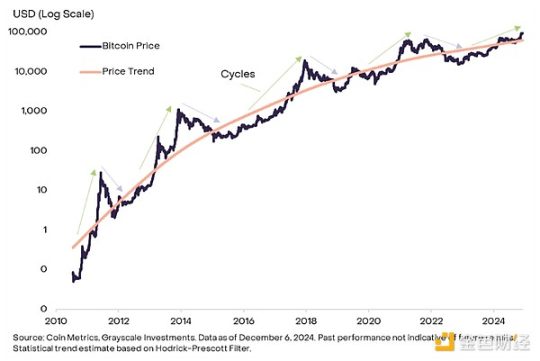
Figure 1: Bitcoin’s price fluctuates repeatedly in an upward trend
Each past price cycle has had its own unique drivers, and there is no reason why future price returns should fully reflect past experience. Furthermore, as Bitcoin matures and is adopted by a wider range of traditional investors, and as the impact of the four-year halving events on supply declines, the cyclical nature of Bitcoin prices may reshape or disappear entirely. Nonetheless, studying past cycles may provide investors with some guidance on Bitcoin's typical statistical behavior, and therefore can inform risk management decisions.
Measuring momentum
Figure 2 shows Bitcoin’s price performance during the appreciation phase of each previous cycle. Prices are indexed to 100 at the cycle low (marking the beginning of the appreciation phase of the cycle) and tracked all the way to its peak (marking the end of the appreciation phase). Figure 3 shows the same information in tabular form.
The first price cycles in Bitcoin's history were relatively short and steep: the first cycle lasted less than a year, and the second cycle lasted about two years. In both cases, the price rose more than 500 times from the low point of the previous cycle. The two subsequent cycles lasted less than three years each. In the cycle from January 2015 to December 2017, the price of Bitcoin increased more than 100 times, and in the cycle from December 2018 to November 2021, the price of Bitcoin increased about 20 times.
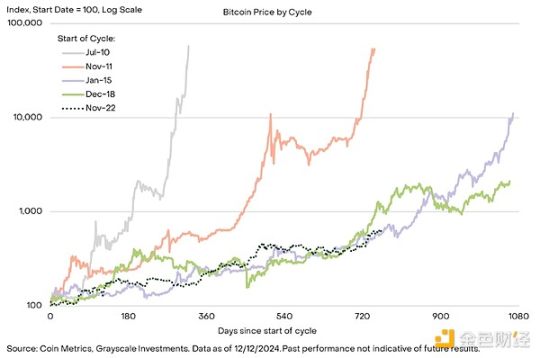
Figure 2: Bitcoin’s trend is relatively close to the past two market cycles
After peaking in November 2021, the price of Bitcoin fell to a cyclical low of approximately $16,000 in November 2022. The current period of price increases began at that time and has therefore lasted for more than two years. As shown in Figure 2, the latest price increase is relatively close to the past two Bitcoin cycles, both of which lasted about a year before the price peaked. From a magnitude perspective, Bitcoin's approximately 6x return in this cycle, while meaningful, is far lower than the returns achieved in the past four cycles. In summary, while we cannot be sure that future price returns will be similar to past cycles, Bitcoin's history tells us that the latest bull run can be extended in terms of both duration and magnitude.
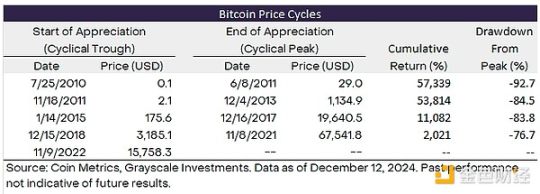
Figure 3: Four different cycles in Bitcoin price history
Measuring the bull market status through various indicators
In addition to measuring price performance in past cycles, investors can also apply various blockchain-based indicators to gauge the maturity of the Bitcoin bull market. For example, common indicators measure the appreciation of Bitcoin relative to buyers' cost basis, the extent of new money inflows into Bitcoin, and the level of price relative to Bitcoin miners' revenue.
One particularly popular metric calculates the ratio of Bitcoin’s market value (MV) (measured by its secondary market price per coin) to its realized value (RV) (measured by the price at which each coin last traded on-chain). This metric is called the MVRV ratio and can be thought of as the degree to which Bitcoin’s market value exceeds the market’s total cost basis. The MVRV ratio has reached values of at least 4 in each of the past four cycles (Chart 4). The current MVRV ratio is 2.6, suggesting that the latest cycle may continue. However, the MVRV ratio peaks at lower levels in each cycle, so it may never reach a level of 4 until the price peaks.
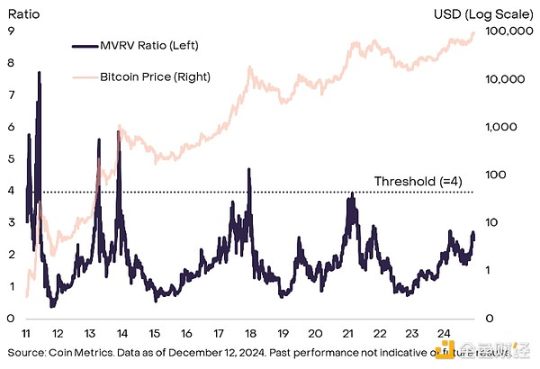
Figure 4: Intermediate MVRV Ratio
Other on-chain metrics measure the extent to which new money is entering the Bitcoin ecosystem — a framework often referred to by experienced cryptocurrency investors as HODL Waves. Prices may appreciate as new capital buys Bitcoin from long-term holders at slightly higher prices. There are a variety of specific measures to choose from, but Grayscale Research prefers to use the number of tokens that have moved on-chain in the last year, relative to Bitcoin’s total free float supply (Chart 5). [2] This metric has reached at least 60% in each of the past four cycles — meaning that during the appreciation phase, at least 60% of the free float supply was transacted on-chain in a year. The current figure is around 54%, suggesting that we may see more tokens changing hands on-chain before prices peak.
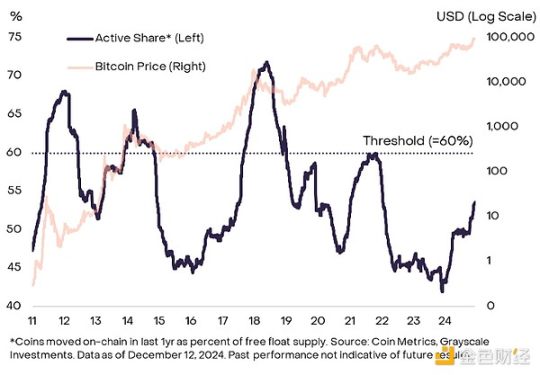
Figure 5: Less than 60% of Bitcoin was in active circulation last year
Other cyclical indicators focus on Bitcoin miners, the professional service providers who secure the Bitcoin network. For example, a common measure calculates the ratio of the miner cap (MC) (the dollar value of all Bitcoin held by miners) to the so-called "hot cap" (TC) (the cumulative value of Bitcoin issued to miners through block rewards and transaction fees). The intuition is that when the value of miners' assets reaches a certain threshold, they may start to make a profit. Historically, when the MCTC ratio exceeds 10, the price subsequently peaks in that cycle (Chart 6). Currently, the MCTC ratio is around 6, indicating that we are still at the midpoint of the current cycle. However, similar to the MVRV ratio, this indicator peaks at a lower level in each cycle, and the price may peak before the MCTC ratio reaches 10.
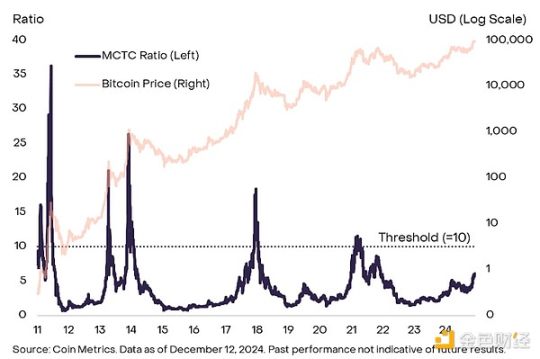
Figure 6: Bitcoin miner metrics are also below previous thresholds
There are many other on-chain metrics that may differ slightly from those from other data sources. Additionally, these tools can only provide a general idea of how the current price rally phase compares to the past, and there is no guarantee that the relationship between these metrics and future price returns will be similar to the past. That being said, taken together, common metrics for Bitcoin cycles are still below past price peaks, suggesting that the current bull run could continue if supported by fundamentals.
Beyond Bitcoin
The cryptocurrency market is broader than Bitcoin, and signals from other parts of the industry may also provide guidance on the state of the market cycle. We believe these indicators may be particularly important over the coming year due to the relative performance of Bitcoin and other crypto assets. In the past two market cycles, Bitcoin’s dominance (Bitcoin’s share of the total cryptocurrency market capitalization) peaked about two years into the bull run (Figure 7). [3] Bitcoin’s dominance has recently begun to decline, which again occurs about two years into the market cycle. If this trend continues, investors should consider focusing on broader measures to determine whether cryptocurrency valuations are approaching cyclical highs.

Figure 7: Bitcoin’s dominance has declined in the third year of the past two cycles
For example, investors can monitor the funding rate, which is the operational cost of holding a long position in a perpetual futures contract. Funding rates tend to rise when speculative traders have high demand for leverage. Therefore, the level of funding rates across the market can indicate the overall open interest of speculative traders. Exhibit 8 shows the weighted average funding rate for the 10 largest crypto assets after Bitcoin (i.e., the largest “altcoins”). [4] Currently, funding rates are positive, indicating demand for long positions from leveraged investors, although they have fallen sharply during the past week’s decline. Moreover, even at local highs, funding rates are still below levels seen earlier this year and below the highs of the previous cycle. Therefore, we believe that current levels are consistent with a moderate level of speculative open interest in the market, rather than necessarily with a mature market cycle.

Figure 8: Funding rates suggest altcoins have a medium level of speculative length
In contrast, altcoin perpetual futures open interest (OI) has reached relatively high levels. Prior to the major liquidation event on Monday, December 9, altcoin open interest on the three major perpetual futures exchanges had reached nearly $54 billion (Chart 9). This indicates relatively high open interest among speculative traders across the market. Following the large liquidations earlier this week, altcoin open interest has fallen by about $10 billion, but remains elevated. High long positioning among speculative traders may be consistent with the late stages of a market cycle, so it may be important to continue monitoring this indicator.
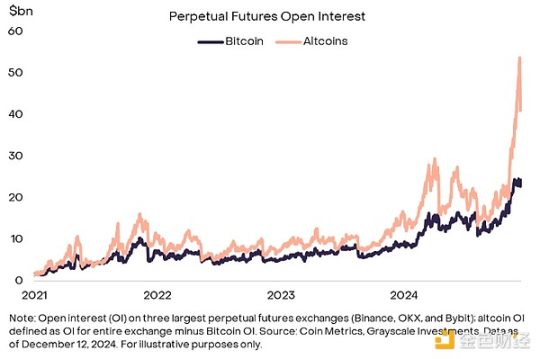
Figure 9: Altcoin open interest levels were high before recent liquidations
Summarize
Digital asset markets have come a long way since Bitcoin’s inception in 2009, and many features of the current crypto bull run are different from those of the past. Most significantly, the approval of spot Bitcoin and Ethereum ETPs in the U.S. has brought in $36.7 billion in net capital inflows and helped integrate these assets into more traditional portfolios. [5] In addition, we believe that the recent U.S. election is likely to bring more regulatory clarity to the market and help ensure a permanent place for digital assets in the world’s largest economy—a significant change from the past, when observers repeatedly questioned the long-term future of the crypto asset class. For these reasons, the valuation of Bitcoin and other crypto assets may not follow the four-year cycle that the asset class had in its early history.
At the same time, Bitcoin and many other crypto assets can be considered digital commodities and, like other commodities, may exhibit a degree of price momentum. Therefore, an assessment of on-chain indicators, as well as altcoin positioning data, can provide investors with a reference for risk management decisions. Grayscale Research believes that the current combination of indicators is consistent with the mid-term stage of the crypto market cycle: indicators such as the MVRV ratio are well above their cyclical lows, but have not yet reached the levels that marked previous market tops. As long as it is supported by fundamentals (such as application adoption and broader macro market conditions), we see no reason why the crypto bull market cannot continue into 2025 and beyond.
Notes
[1] In the context of financial markets, a random walk refers to the phenomenon that asset prices evolve in an unpredictable manner.
[2] Coin Metrics defines free float Bitcoin supply as coins that have been active at least once in the past five years.
[3] Figure 7 only shows the two most recent cycles because the altcoin market was not fully developed before then.
[4] Defined as the largest token by market cap after Bitcoin for which data is available. No data is available for TON, so the next largest asset, DOT, is included.
[5] Source: Bloomberg, Grayscale Investments. Data as of December 11, 2024.











